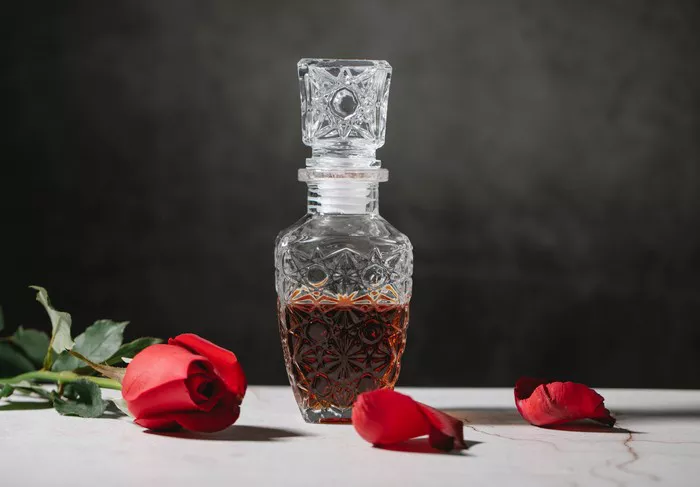Brandy, a beloved alcoholic beverage, has long been a subject of debate regarding its classification. To comprehend its true categorization accurately, it’s crucial to delve into the intricate details and nuances that define both spirits and liqueurs. Understanding the production process, historical context, and key differentiators will ultimately shed light on the question: is brandy a spirit or liqueur?
The Essence of Classification: Spirit vs. Liqueur
Before addressing the specific classification of brandy, it’s imperative to establish the fundamental disparities between spirits and liqueurs. Spirits, broadly categorized as alcoholic beverages produced through distillation, encompass a diverse range, including vodka, gin, rum, whiskey, and yes, brandy. These are characterized by their high alcohol content achieved through distillation and aging processes. On the contrary, liqueurs are a subset of spirits but are distinct due to their sweetening agents, flavorings, and lower ABV (alcohol by volume). They often derive their flavors from fruits, herbs, spices, or nuts, and contain added sugars, providing a sweeter taste profile compared to most spirits.
Unraveling Brandy’s Nature: Defining Its Identity
Brandy, derived from the Dutch word “brandewijn” meaning “burnt wine,” typically involves distilling wine or fermented fruit juice. Its production involves heating, evaporating, and then cooling the liquid to create a concentrated alcoholic beverage. This process results in a higher alcohol content than the base wine. However, brandy stands at the crossroads of the spirit and liqueur classification due to its intricate production methods and the varying styles in which it is crafted.
Understanding Brandy’s Distinction as a Spirit
At its core, brandy unquestionably aligns with the spirit category. Through the process of distillation, brandy achieves a significantly higher alcohol content than the original fermented liquid. The primary aim of distillation in brandy production is to concentrate the alcohol, thereby intensifying its flavors and aromas. Additionally, brandy undergoes aging in wooden barrels, contributing to its complexity and character, akin to other renowned spirits like whiskey or cognac. These characteristics distinctly place brandy in the realm of spirits.
Navigating the Liqueur Aspect of Brandy
While brandy firmly stands as a spirit due to its distillation and aging, certain variations possess liqueur-like qualities. Some brandies undergo additional processes where they are sweetened, flavored, or infused with fruits, spices, or herbs. These additions impart a sweeter taste and a more diverse flavor profile, blurring the line between traditional brandy and liqueur. Yet, despite these modifications, the underlying essence of brandy as a distilled spirit remains prevalent.
See Also: benefits of tequila vs vodka
Historical Evolution: Tracing Brandy’s Origins and Adaptations
Tracing its origins back to the 12th century, brandy’s evolution has seen various adaptations and refinements, contributing to the ongoing debate of its classification. Initially utilized for medicinal purposes, brandy gained prominence as a spirit through its distillation practices. As it traversed different cultures and regions, diverse production methods emerged, giving rise to distinct varieties such as Cognac, Armagnac, and fruit brandies like apple or pear, each showcasing unique characteristics that continue to blur the lines between spirit and liqueur classifications.
Distinguishing Factors: Analyzing Brandy’s Production Variations
The classification of brandy as either a spirit or liqueur also depends on the production techniques employed. For instance, traditional brandy production involves distillation and aging without additional sweeteners or flavorings, placing it squarely within the realm of spirits. Conversely, some fruit-based brandies undergo infusion or maceration with sugars and flavor additives, edging closer to the liqueur category. The variation in production methods plays a pivotal role in the debate surrounding brandy’s classification.
Regulatory Framework: Influence on Brandy’s Classification
The regulatory frameworks governing alcoholic beverages play a crucial role in defining brandy’s classification. Depending on the country or region, distinct regulations govern the production, labeling, and categorization of brandy. For instance, some regions have stringent guidelines stipulating that brandy must adhere strictly to traditional distillation and aging processes, reinforcing its identity as a spirit. Conversely, regions with more lenient regulations may allow additional flavorings and sweeteners, blurring the boundaries between brandy and liqueur.
Consumer Perception: The Influence on Brandy’s Identity
The perception of consumers also contributes significantly to the debate on whether brandy is a spirit or a liqueur. Traditionalists who appreciate brandy’s historical heritage and craftsmanship tend to lean towards defining it solely as a spirit, emphasizing its purity and authenticity achieved through distillation and aging. In contrast, consumers seeking diverse flavor profiles and sweetness might incline towards acknowledging brandies with added flavorings and sweeteners as liqueur-like variants, blurring the established classifications.
Conclusion: The Enigmatic Nature of Brandy’s Classification
In conclusion, the debate regarding whether brandy is a spirit or liqueur hinges on multifaceted factors encompassing production techniques, historical context, regulatory frameworks, and consumer perceptions. While brandy predominantly aligns with the spirits category due to its distillation and aging processes, certain variations with added sweeteners and flavorings blur the lines, approaching the liqueur realm. Ultimately, brandy’s enigmatic nature lies in its ability to traverse the boundaries between spirits and liqueurs, offering a diverse spectrum of offerings that cater to a wide array of palates and preferences.


